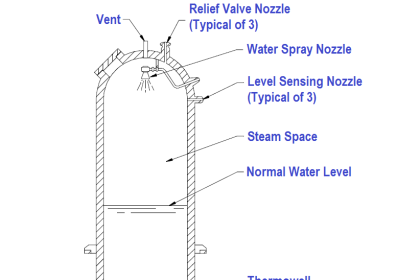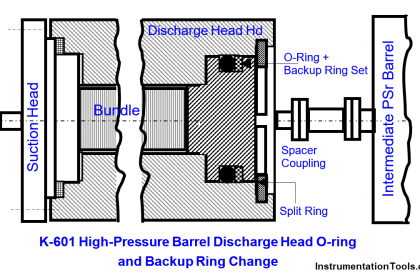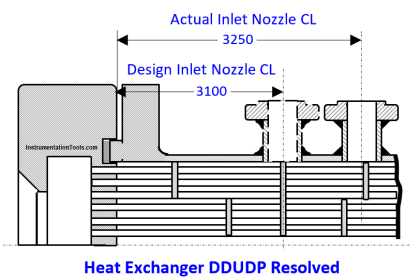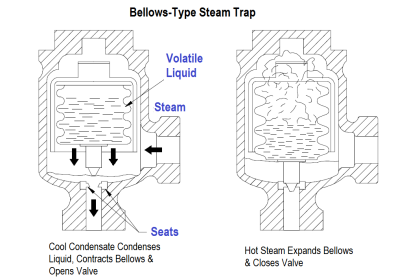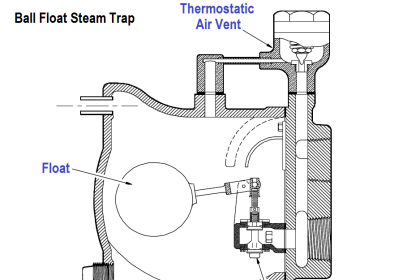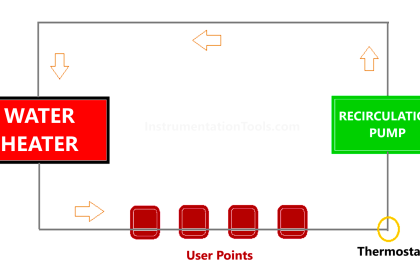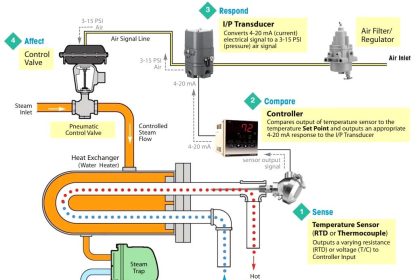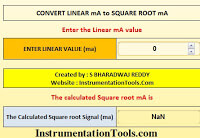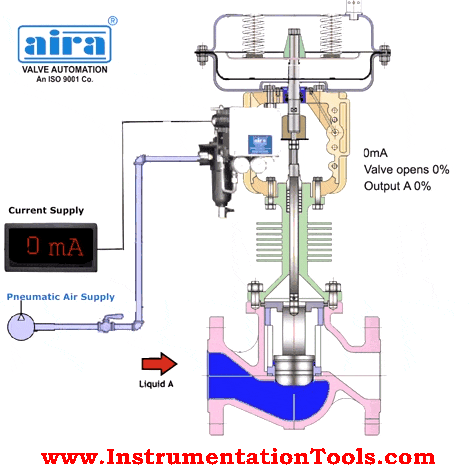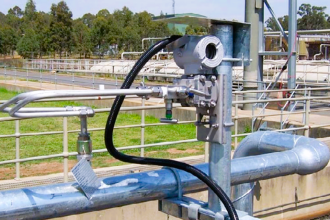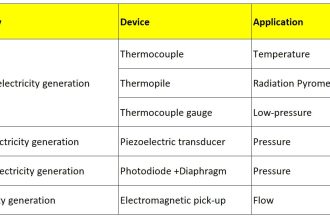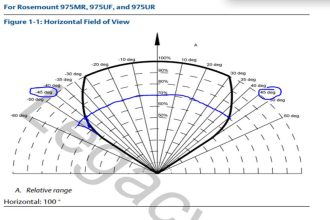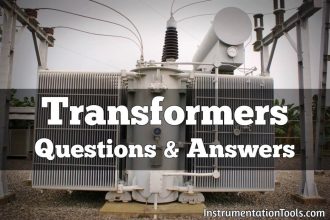The amount of moisture that air can hold is inversely proportional to the pressure of the air. As the pressure of the air increases, the amount of moisture that air can hold decreases. The amount of moisture that air can hold is also proportional to the temperature of the air. As the temperature of the air increases, the amount of moisture it can hold increases.
However, the pressure change of compressed air is larger than the temperature change of the compressed air. This causes the moisture in the air to condense. Moisture in compressed air systems can cause serious damage. The condensed moisture can cause corrosion, water hammers, and freeze damage; therefore, it is important to avoid moisture in compressed air systems. Coolers are used to minimize the problems caused by heat and moisture in compressed air systems.
Coolers used on the discharge of a compressor are called after-coolers. Their purpose is to remove the heat generated during the compression of the air. The decrease in temperature promotes the condensing of any moisture present in the compressed air. This moisture is collected in condensate traps that are either automatically or manually drained.
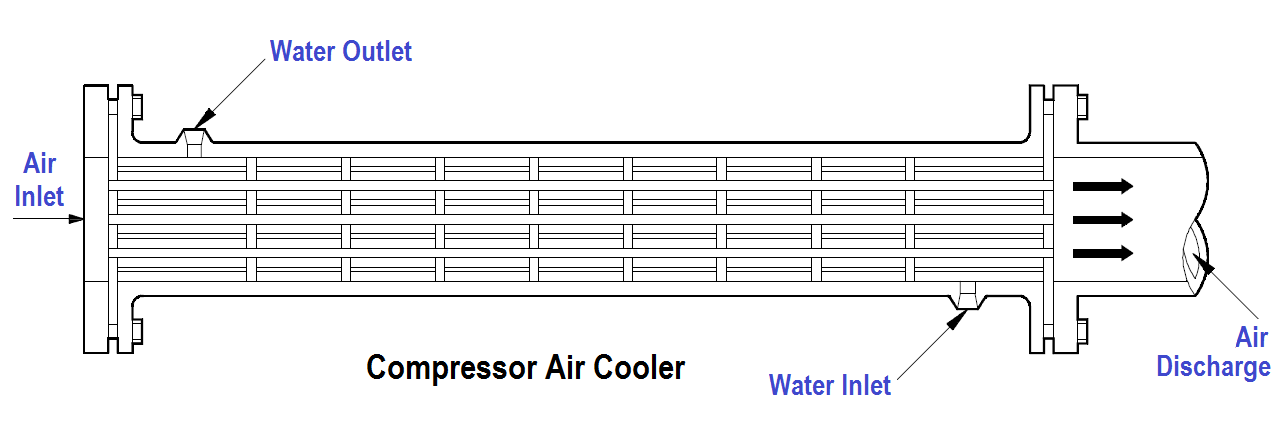
Figure 7 Compressor Air Cooler
If the compressor is multi-staged, there may be an inter-cooler, which is usually located after the first stage discharge and before the second stage suction. The principle of the inter-cooler is the same as that of the after-coolers. The result is drier, cooler, compressed air. The structure of a particular cooler depends on the pressure and volume of the air it cools. Figure 7 illustrates a typical compressor air cooler. Air coolers are used because drier compressed air helps prevent corrosion and cooler compressed air allows more air to be compressed for a set volume.
